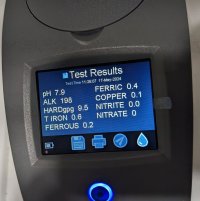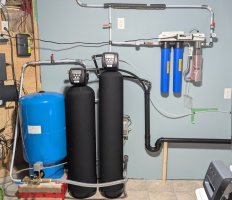MeZzzz
New Member
Hi,
Here is the setup I have:
Well (Pump flow rate: 9.5GPM)
Pressure switch 40-60 with low-pressure shut-off valve
40G pressure tank
Clack WS1 1.5cuft FOK iron filter (scheduled at 2am)
Clack WS1 1.5cuft Water softener (scheduled at 4am)
UV Filter
1" pipe from well to pressure tank
3/4" pex for the rest
When Water softener is doing regen, there is no issue.
But when the iron filter is doing regen, the water is off in the morning.
I tried to manually start the regen to see what actually happens, and as soon as it starts backwash, the pressure drops a lot and causes pressure switch to shut off.
but when I pull the switch on pressure switch to start the pump again, it will start pumping and iron filter continues with backwash without any issue.
So I don't think it has any problem keeping up with the water flow.
Anyone knows what could be the issue that right at the beginning of backwash, the pressure drops a lot? and what can I do to fix this?
Thanks,
Here is the setup I have:
Well (Pump flow rate: 9.5GPM)
Pressure switch 40-60 with low-pressure shut-off valve
40G pressure tank
Clack WS1 1.5cuft FOK iron filter (scheduled at 2am)
Clack WS1 1.5cuft Water softener (scheduled at 4am)
UV Filter
1" pipe from well to pressure tank
3/4" pex for the rest
When Water softener is doing regen, there is no issue.
But when the iron filter is doing regen, the water is off in the morning.
I tried to manually start the regen to see what actually happens, and as soon as it starts backwash, the pressure drops a lot and causes pressure switch to shut off.
but when I pull the switch on pressure switch to start the pump again, it will start pumping and iron filter continues with backwash without any issue.
So I don't think it has any problem keeping up with the water flow.
Anyone knows what could be the issue that right at the beginning of backwash, the pressure drops a lot? and what can I do to fix this?
Thanks,


